When travelers think of Europe, many picture historic cities, grand castles, or snowy mountains. But the continent is also blessed with some of the world’s most stunning beaches, ranging from the dramatic volcanic sands of Iceland to the turquoise lagoons of Greece and the surf towns of France. Whether your dream is to soak in the sun, enjoy watersports, or explore unique coastal landscapes, Europe offers beaches for every kind of traveler.
This guide covers 15 of the best beaches in Europe, complete with travel tips on when to go, how to reach them, and the top things to do once you’re there.
1. Navagio Beach (Shipwreck Beach) – Zakynthos, Greece
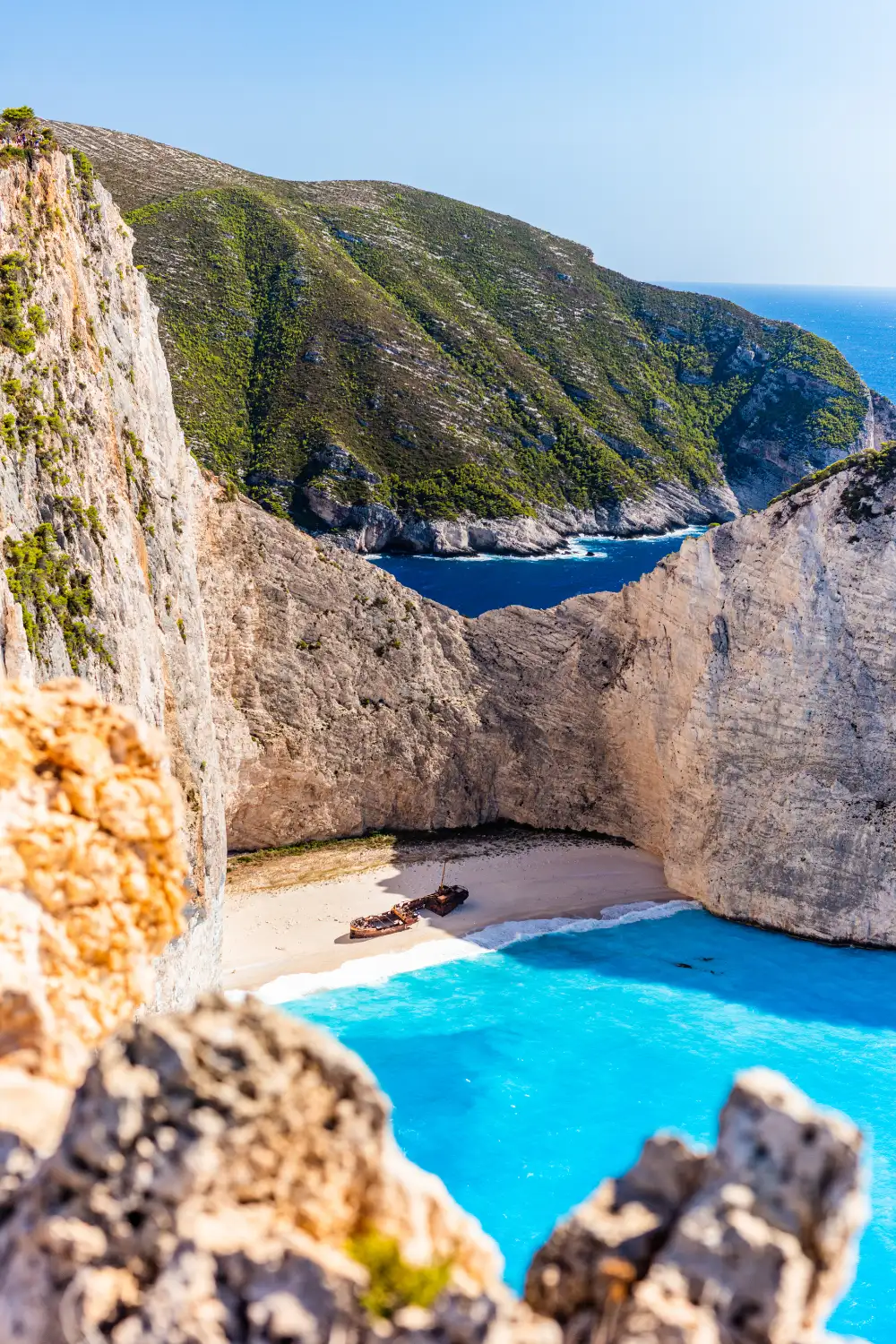
Why Visit
Navagio Beach is one of Greece’s most famous natural wonders, framed by towering limestone cliffs and accessible only by boat. Its soft white sand is made even more striking by the rusting shipwreck that sits in the middle, giving it the nickname “Shipwreck Beach.”
Best Time to Visit
May to September for warm weather and calm seas. Early morning or late afternoon boat tours are less crowded.
How to Get There
- Accessible only by boat from Porto Vromi, Zakynthos Town, or Agios Nikolaos.
- Cliff-top viewpoints are reachable by car.
Top Things to Do
- Swim in turquoise waters.
- Take a boat trip to the Blue Caves.
- Hike up to the viewpoint above for iconic photos.
2. Zlatni Rat (Golden Horn) – Brač, Croatia
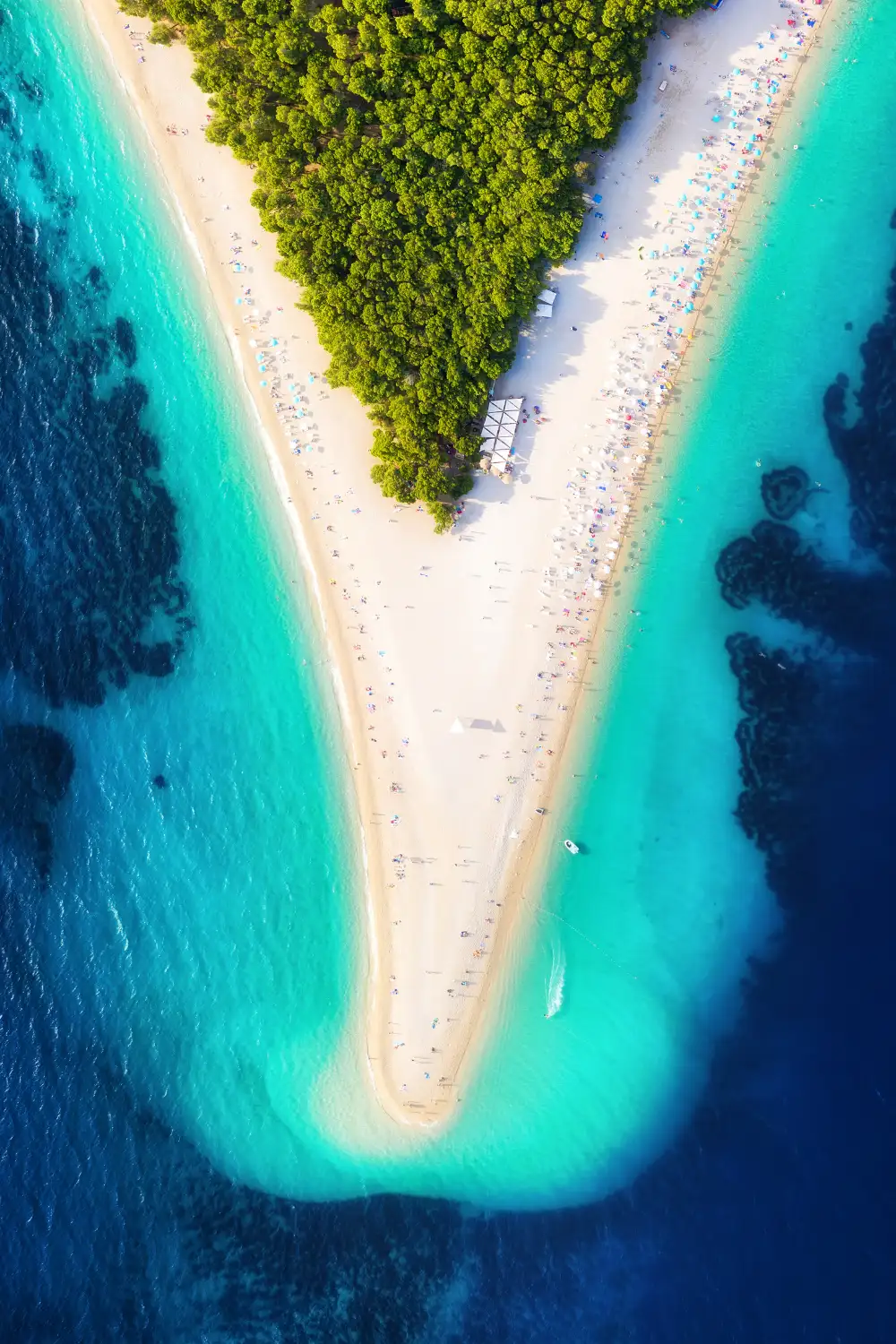
Why Visit
Zlatni Rat is one of Europe’s most unique beaches, known for its V-shaped “horn” that shifts with the tide and winds. Surrounded by clear Adriatic waters and backed by pine forests, it’s a favorite for sunbathers and water sports enthusiasts.
Best Time to Visit
June–September when the sea is warm and conditions are perfect for windsurfing.
How to Get There
- Ferry from Split to Supetar, then bus/taxi to Bol.
Top Things to Do
- Windsurf or kitesurf in the breezy bay.
- Explore the charming town of Bol.
- Hike to Vidova Gora for panoramic island views.
3. Praia da Marinha – Algarve, Portugal
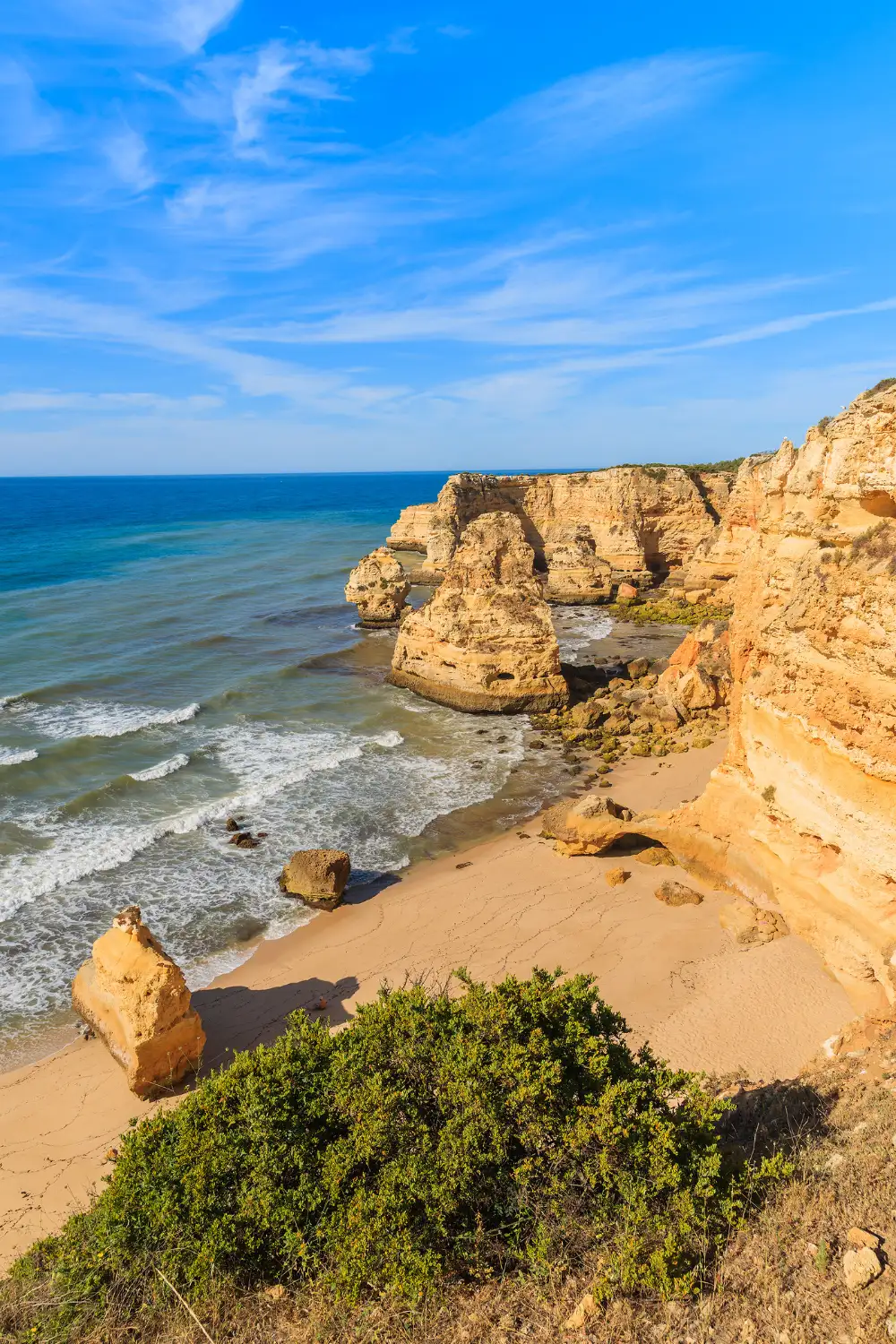
Why Visit
Often ranked among the most beautiful beaches in the world, Praia da Marinha features dramatic cliffs, golden sands, and crystal-clear waters. It’s a postcard-perfect slice of the Algarve coast.
Best Time to Visit
May–October for warm sun and calm swimming conditions.
How to Get There
- 1-hour drive from Faro Airport.
- Public buses connect to Lagoa, followed by a short taxi ride.
Top Things to Do
- Hike the Seven Hanging Valleys Trail for epic cliffside views.
- Snorkel in the clear, shallow waters.
- Take a boat tour to the Benagil Sea Cave.
4. Myrtos Beach – Kefalonia, Greece
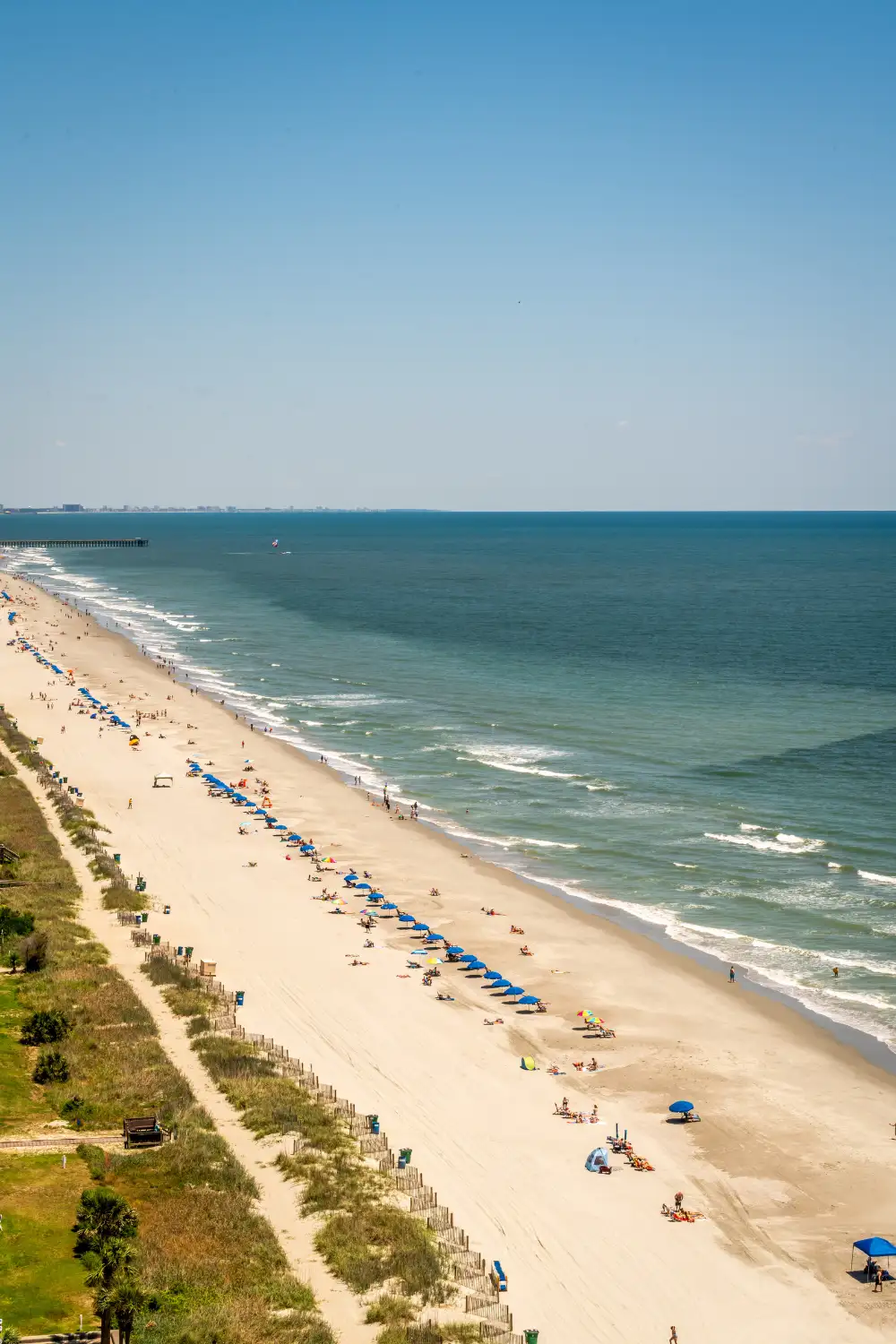
Why Visit
Myrtos is one of the most photographed beaches in Greece, famous for its dazzling white pebbles and turquoise waters backed by towering cliffs. Its natural setting makes it breathtaking from both the shore and above.
Best Time to Visit
June–September for swimming and sunbathing.
How to Get There
- A 45-minute drive from Argostoli, Kefalonia’s capital.
Top Things to Do
- Relax on the pebble beach.
- Watch a spectacular sunset from the cliffs above.
- Explore nearby Assos and its castle.
5. Praia da Falésia – Algarve, Portugal
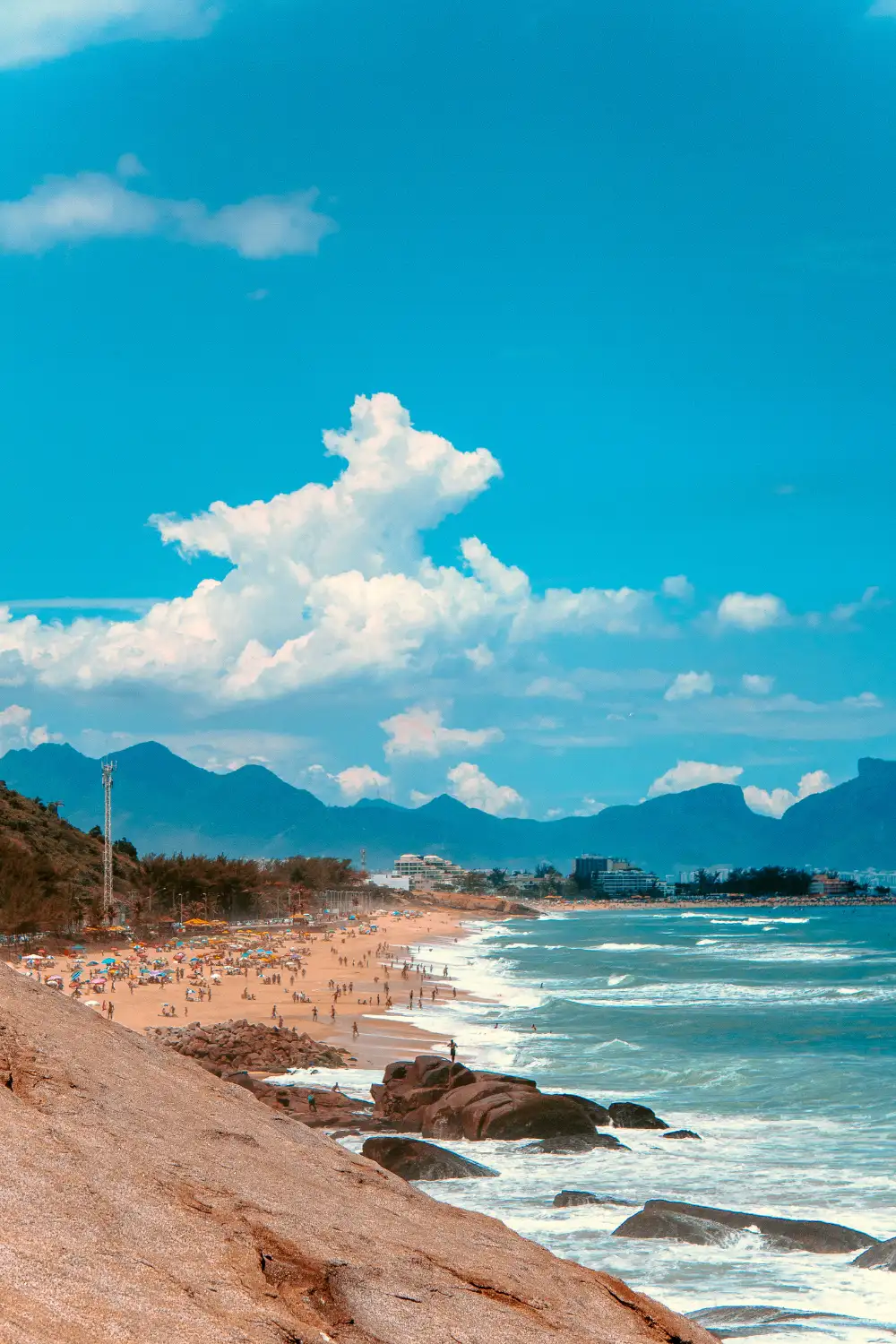
Why Visit
Praia da Falésia stretches for over 6 km and is famous for its dramatic red and golden cliffs. The mix of colors, combined with soft sand and calm seas, makes it one of Portugal’s most impressive coastal spots.
Best Time to Visit
May–September for beach weather.
How to Get There
- Easily accessible from Albufeira or Vilamoura.
Top Things to Do
- Walk the long sandy shoreline.
- Try parasailing or jet skiing.
- Enjoy seafood at beachfront restaurants.
6. Playa de las Catedrales – Galicia, Spain
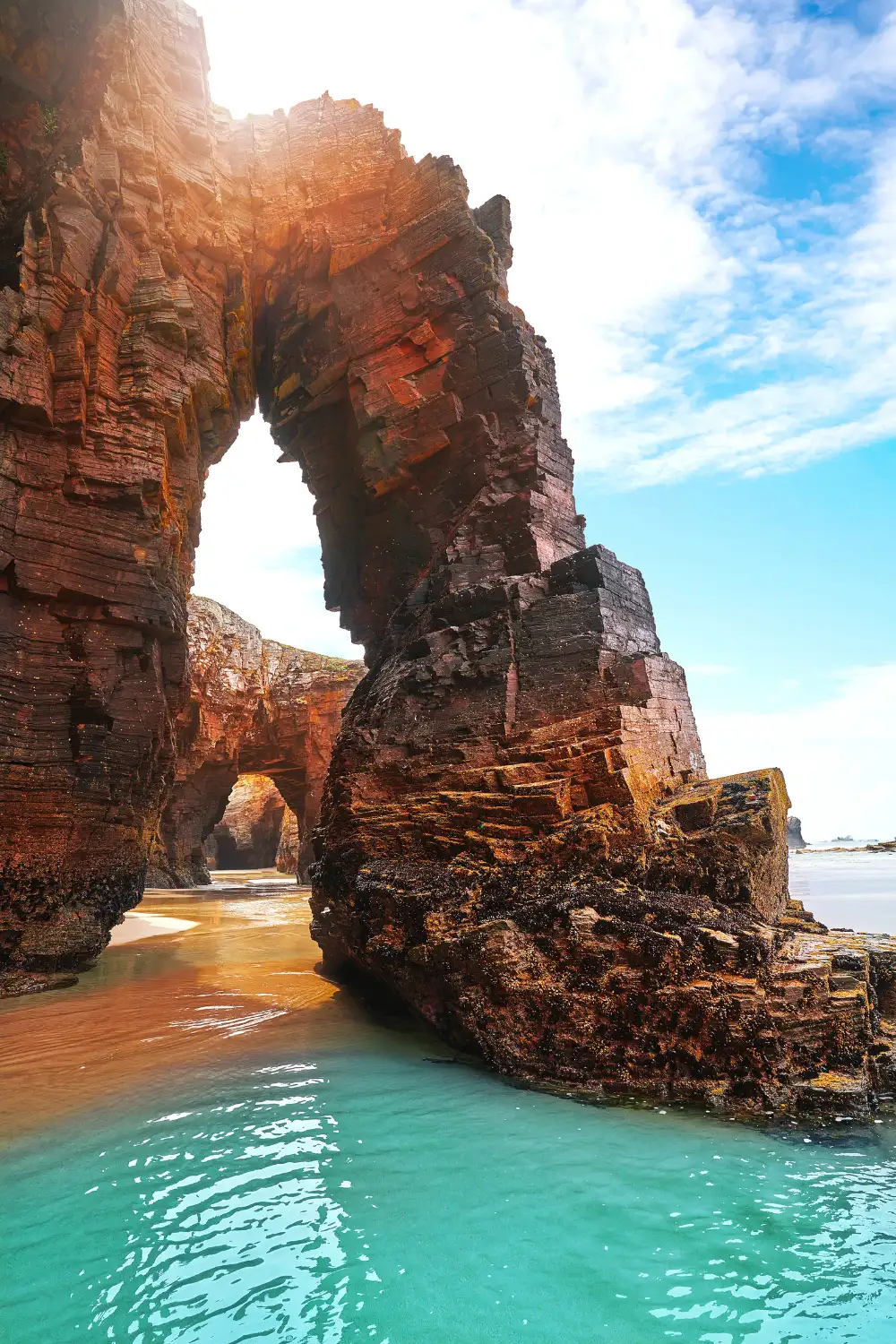
Why Visit
This natural wonder is famous for its cathedral-like rock arches and caves revealed at low tide. It’s a rare combination of geology and beauty that feels almost otherworldly.
Best Time to Visit
Summer is most popular, but timing with low tide is essential.
How to Get There
- Near Ribadeo; about 2 hours by car from Oviedo.
Top Things to Do
- Walk under the massive rock arches.
- Explore caves exposed at low tide.
- Visit Ribadeo’s old town afterward.
7. Nissi Beach – Ayia Napa, Cyprus
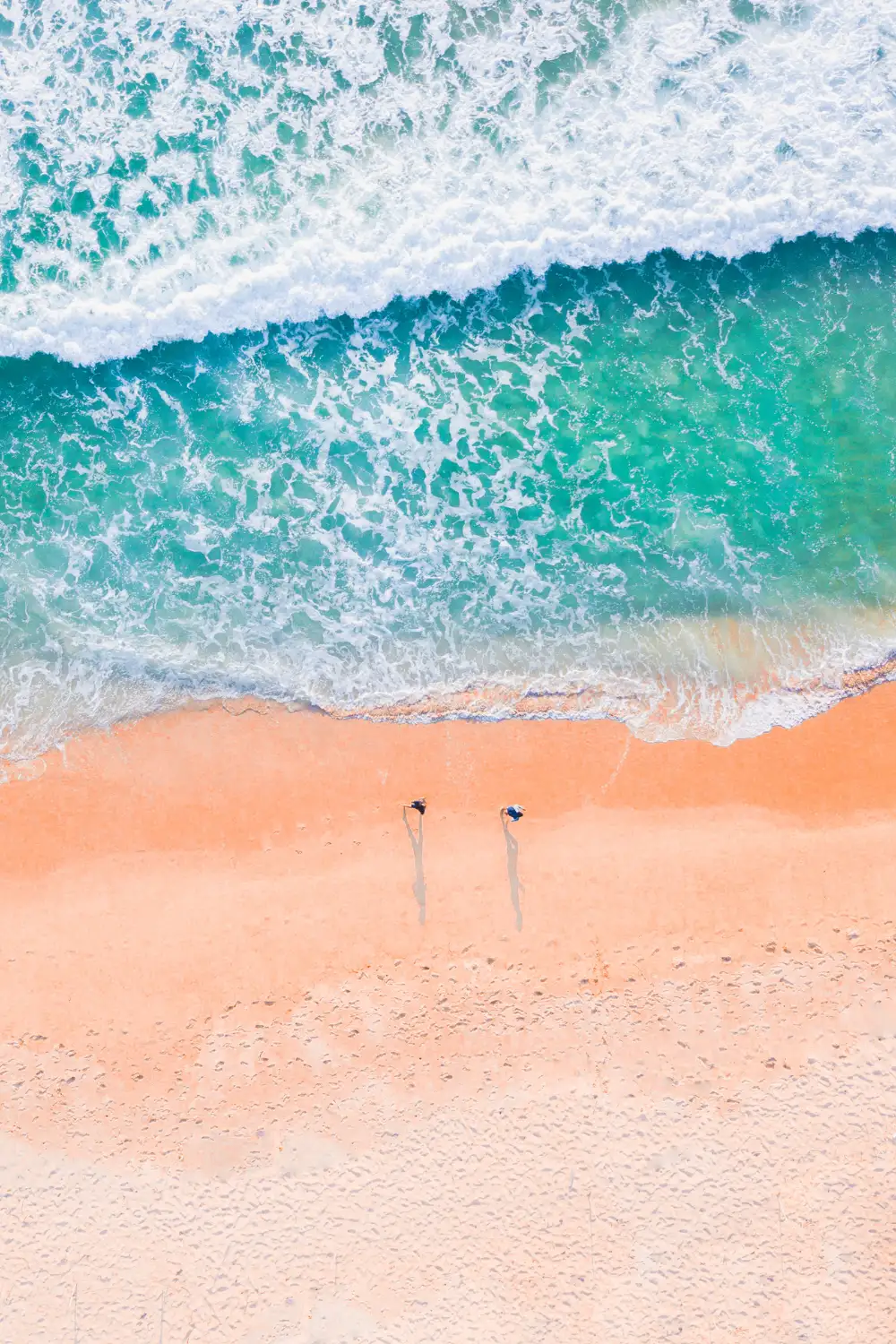
Why Visit
Nissi Beach is one of Cyprus’s liveliest spots, known for its shallow turquoise waters and party-friendly vibe. It’s perfect for those who enjoy both daytime relaxation and nightlife energy.
Best Time to Visit
May–October, with July and August being the busiest.
How to Get There
- 1 hour from Larnaca Airport by car.
Top Things to Do
- Swim to the tiny islet connected by shallow waters.
- Join beach parties with live DJs.
- Explore Ayia Napa’s vibrant nightlife.
8. Cala Macarella – Menorca, Spain
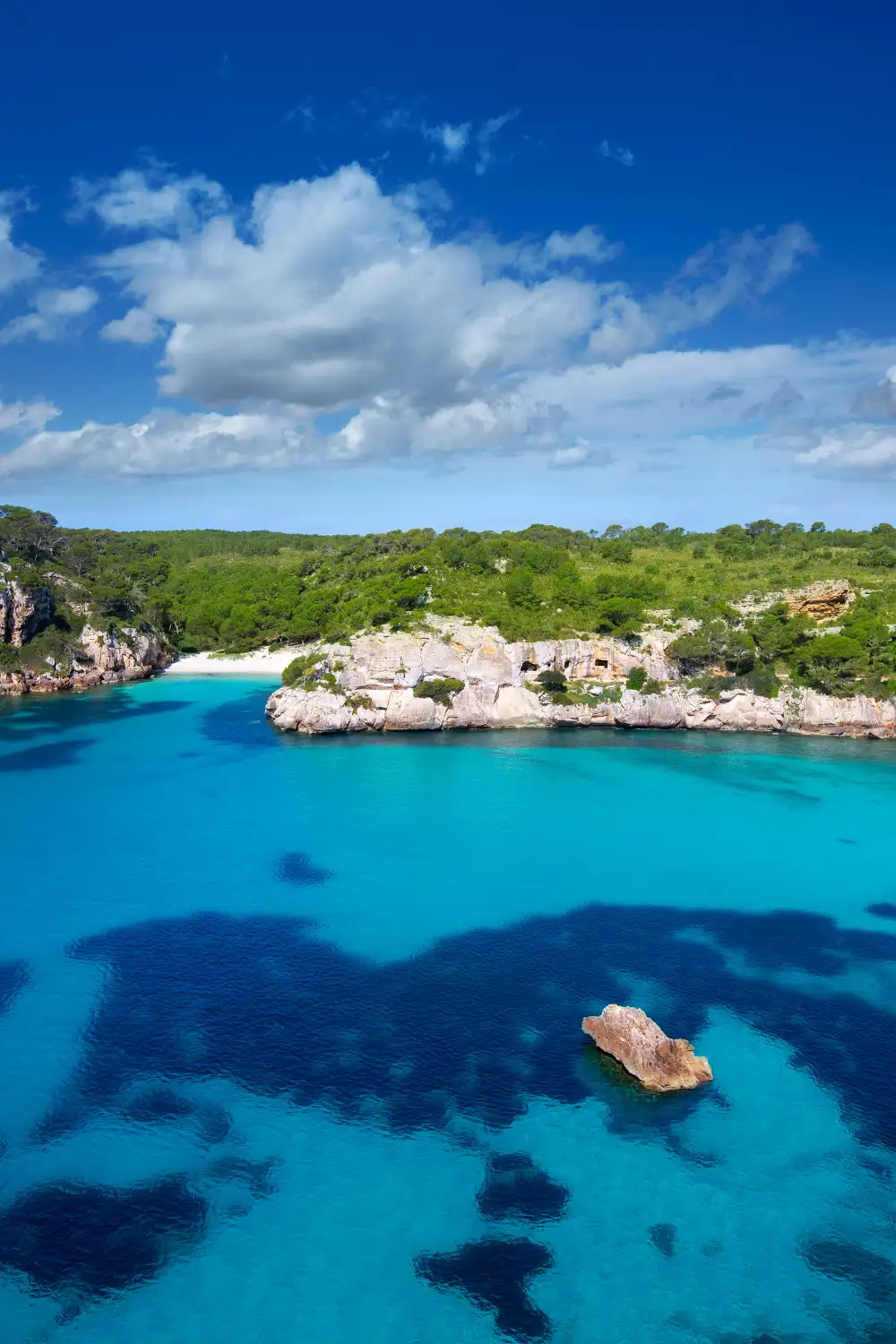
Why Visit
This secluded cove is surrounded by pine-covered cliffs and features turquoise waters and white sand. It’s quieter and more intimate compared to other Balearic beaches.
Best Time to Visit
June–September for swimming and kayaking.
How to Get There
- Bus from Ciutadella or hike along the Camí de Cavalls trail.
Top Things to Do
- Swim or snorkel in crystal-clear waters.
- Kayak to the nearby Cala Macarelleta.
- Hike coastal trails with incredible views.
9. Reynisfjara Black Sand Beach – Iceland

Why Visit
Unlike traditional beaches, Reynisfjara features dramatic volcanic black sands, basalt columns, and towering sea stacks. It’s wild, raw, and unforgettable.
Best Time to Visit
Summer (June–August) for accessibility; winter for dramatic landscapes.
How to Get There
- 2.5 hours by car from Reykjavík, near the village of Vík.
Top Things to Do
- Photograph the basalt columns and caves.
- Spot puffins nesting on cliffs in summer.
- Explore Vík village for local culture.
10. Elafonissi Beach – Crete, Greece
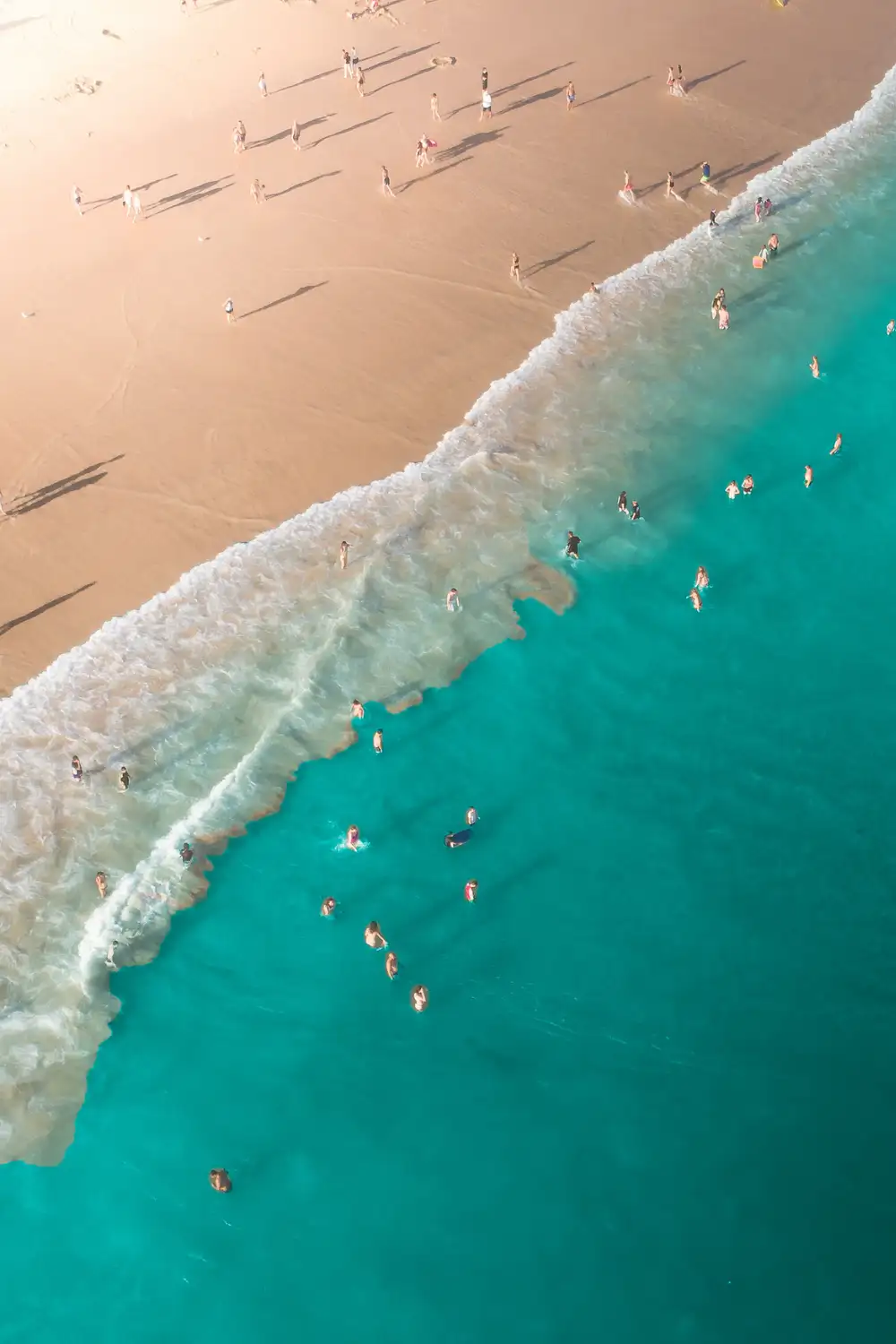
Why Visit
Elafonissi is famous for its pink-tinged sand and shallow, lagoon-like waters. It’s a dream destination for families and couples seeking a unique beach setting.
Best Time to Visit
May–October for swimming and sunbathing.
How to Get There
- 1.5 hours by car from Chania.
Top Things to Do
- Walk across the sandbar to Elafonissi islet.
- Swim in shallow turquoise lagoons.
- Explore nearby monasteries.
11. Hossegor Beach – France

Why Visit
Hossegor is Europe’s surf capital, drawing enthusiasts from around the world to its powerful Atlantic swells. Beyond the waves, the town has a relaxed vibe, with beach bars and excellent seafood.
Best Time to Visit
September–October for world-class surf conditions.
How to Get There
- 1 hour by car from Biarritz.
Top Things to Do
- Surf or watch international competitions.
- Relax in beachfront cafés.
- Explore nearby Basque villages.
12. Sveti Stefan – Montenegro
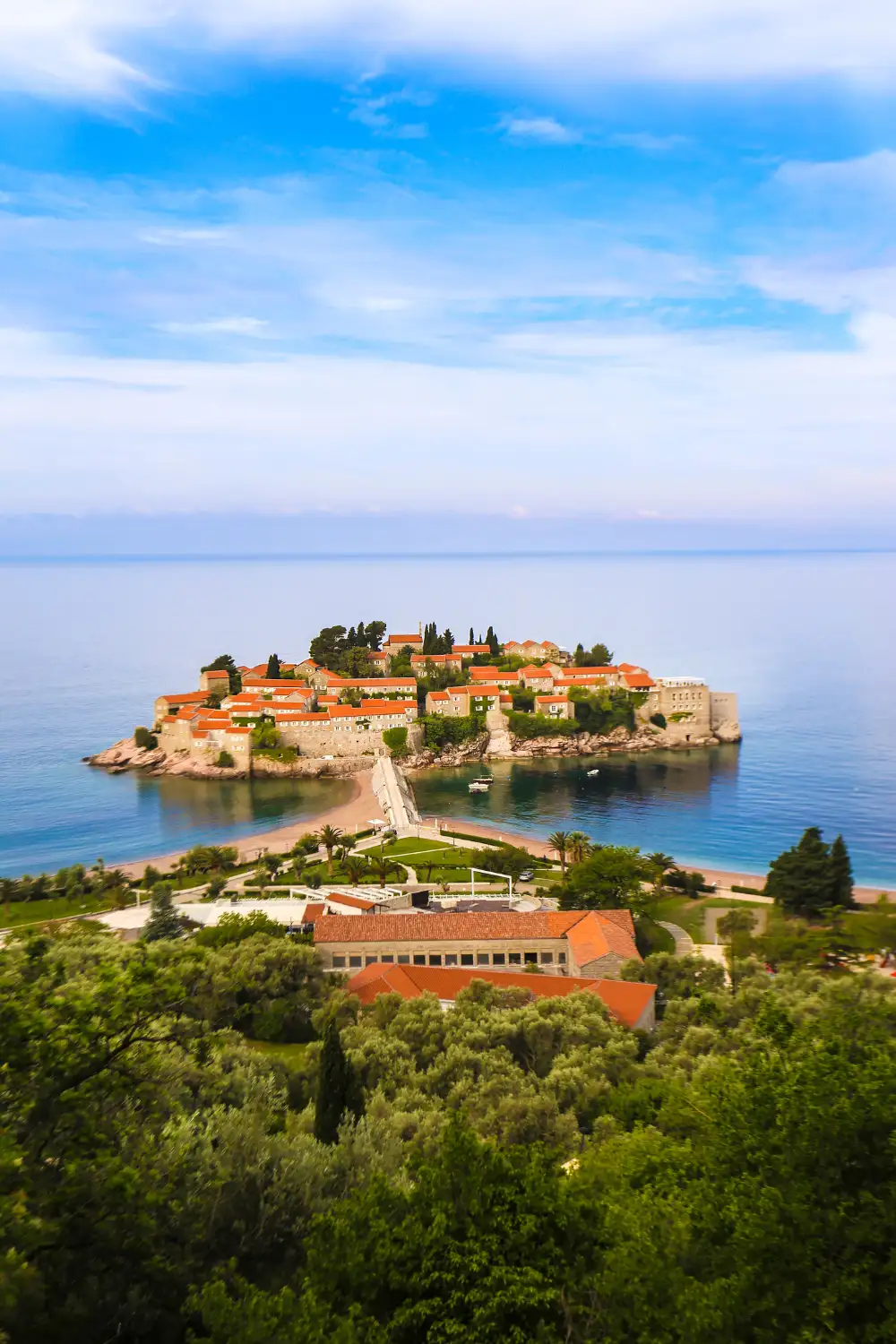
Why Visit
Sveti Stefan is a tiny fortified islet connected to the mainland by a narrow causeway. Its pink sand beaches and exclusive resort make it one of the Adriatic’s most photographed spots.
Best Time to Visit
May–September for warm weather.
How to Get There
- 30 minutes by car from Budva.
Top Things to Do
- Relax on Adriatic beaches.
- Photograph the iconic island.
- Explore Budva’s charming old town.
13. Playa de Ses Illetes – Formentera, Spain

Why Visit
Often compared to the Caribbean, Ses Illetes is known for its shallow turquoise waters and soft white sands. It’s consistently ranked among the world’s best beaches.
Best Time to Visit
June–September.
How to Get There
- Ferry from Ibiza to Formentera.
Top Things to Do
- Swim or snorkel in crystal-clear waters.
- Rent a bike or scooter to explore the island.
- Enjoy fresh seafood at beachfront restaurants.
14. Praia dos Ingleses – Madeira, Portugal
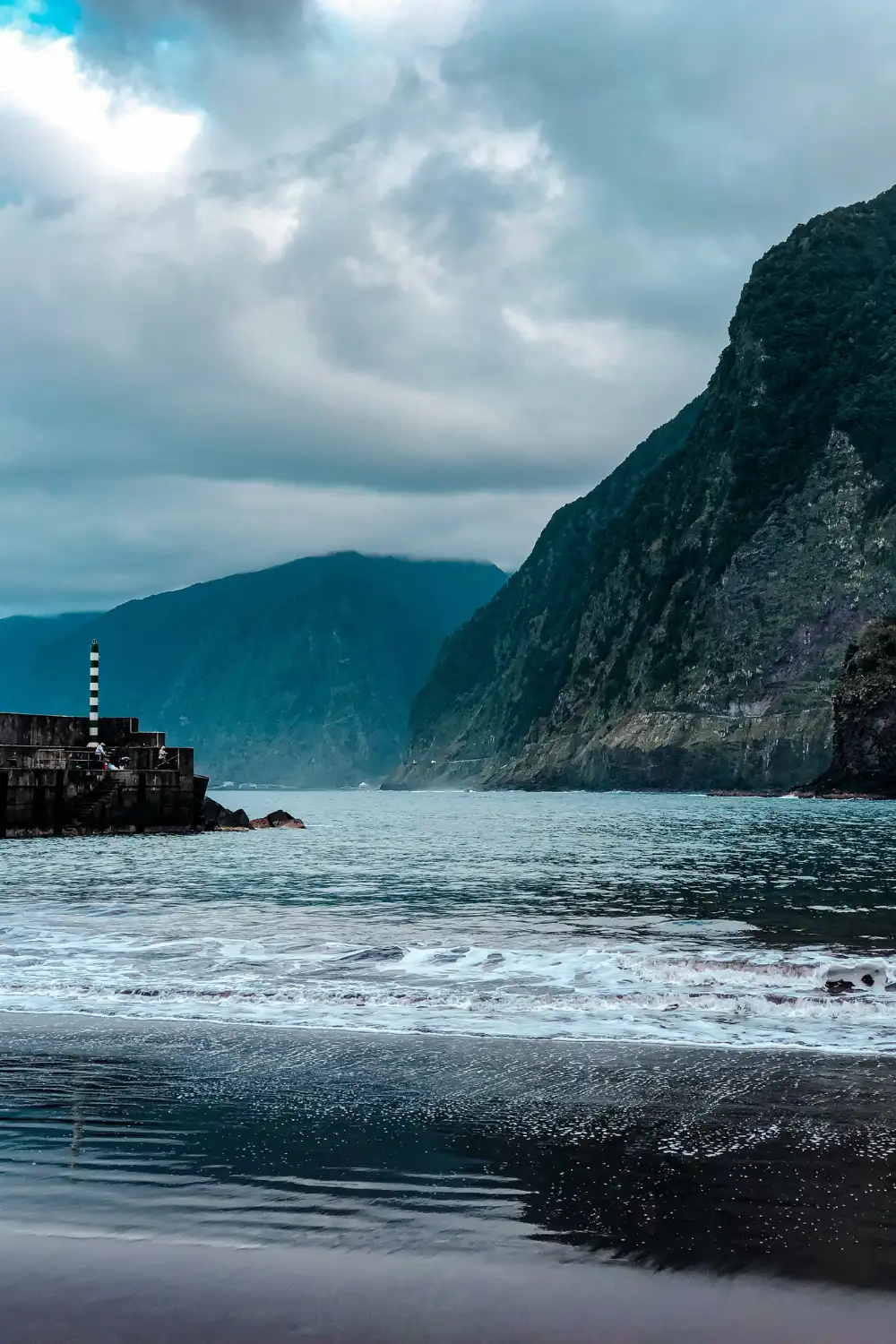
Why Visit
This rocky Atlantic beach offers natural pools and dramatic scenery, perfect for travelers seeking a wilder coastal experience.
Best Time to Visit
Summer for swimming, winter for rugged wave-watching.
How to Get There
- Located near Funchal, accessible by car or bus.
Top Things to Do
- Swim in natural volcanic rock pools.
- Snorkel in clear waters.
- Explore Funchal’s food and markets.
15. Vikos Gorge River Beaches – Greece
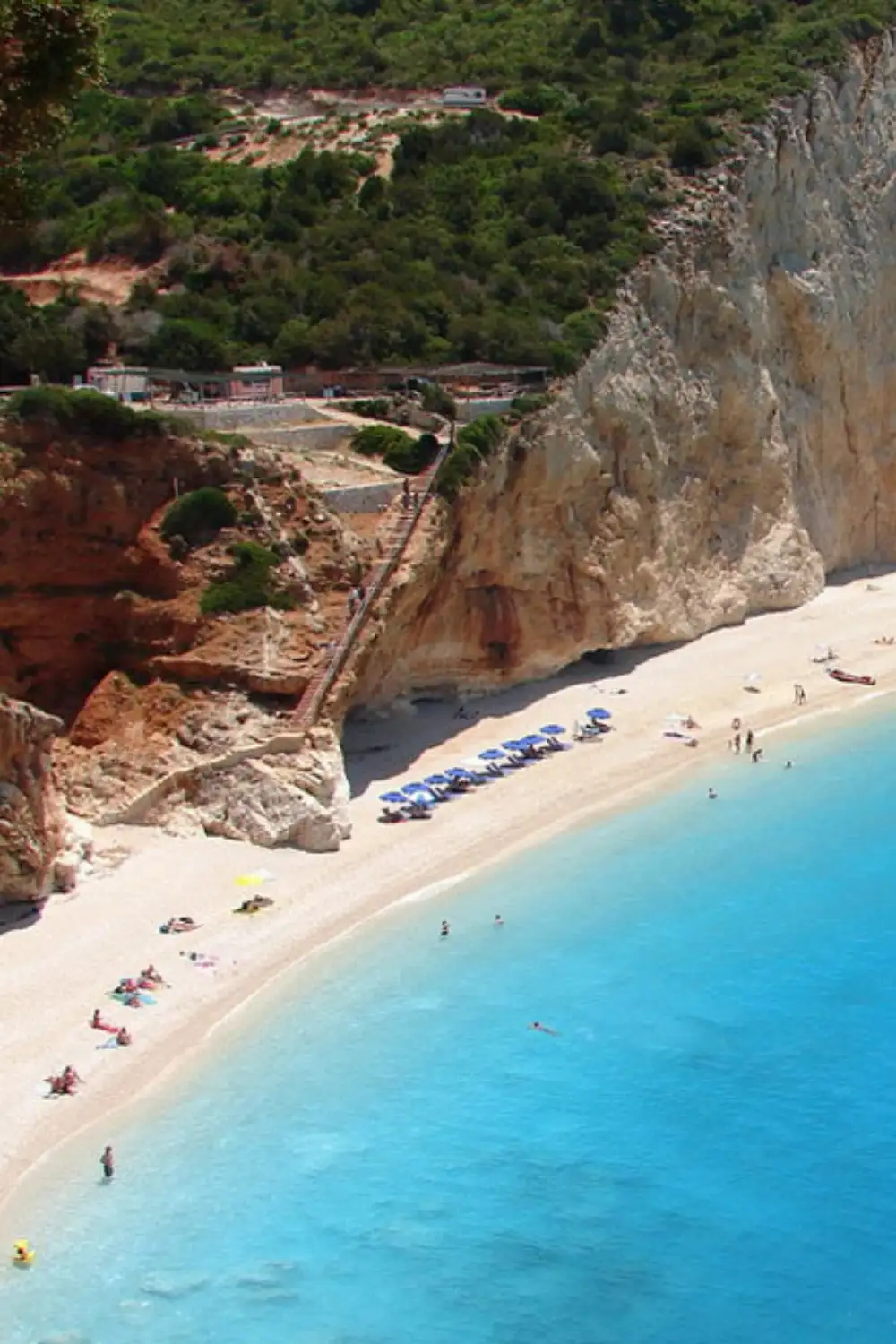
Why Visit
Hidden deep within one of the world’s deepest gorges, these river beaches are perfect for those who prefer adventure to relaxation. Surrounded by dramatic cliffs, they feel completely untouched.
Best Time to Visit
Spring–autumn for hiking and river activities.
How to Get There
- Drive from Ioannina, then hike into the gorge.
Top Things to Do
- Swim in natural river pools.
- Hike through Vikos Gorge trails.
- Visit traditional stone villages in Zagori.
Conclusion
Europe’s beaches are as varied as its cultures. From the pink sands of Crete and the volcanic black shores of Iceland to the lively party atmosphere of Cyprus and the serene coves of Menorca, there’s truly something for everyone. Whether you want sun and relaxation or adventure and exploration, these 15 beaches are among the very best Europe has to offer.

